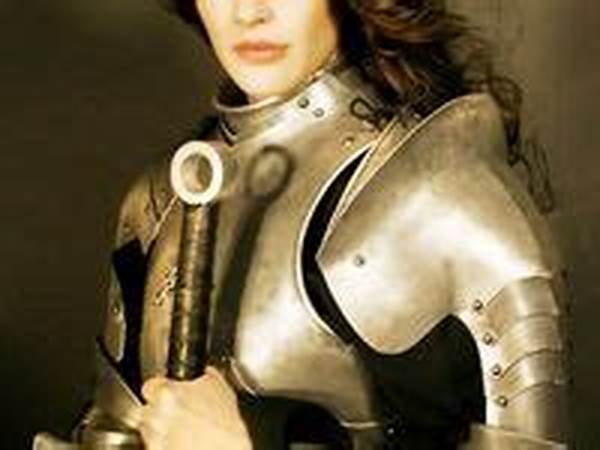Medieval fiction, with its chivalric codes and romantic ideals, offers a compelling exploration of societal norms and values through its depiction of damsels and knights. These two archetypes often symbolize the dualistic nature of medieval literature, where heroism and vulnerability coexist harmoniously. Within this literary tradition, knights embark on perilous quests to rescue damsels, embodying ideals of courage and nobility. Conversely, damsels, often portrayed as figures of innocence and beauty, reflect the societal constraints and gender dynamics of the medieval era. The interplay between these characters not only provides dramatic tension but also serves as a reflection of the philosophical and cultural ideologies of the period.
Read Now : Romance Revived From Long Ago
The Archetypal Roles of Damsels and Knights
In the realm of medieval fiction, damsels and knights epitomize the quintessential themes of romance and valor. These narratives often present knights as the embodiment of chivalric ideals, undertaking quests to protect or win the favor of a lady, thus fulfilling their societal roles. While knights are often depicted as paragons of bravery and virtue, damsels represent vulnerability and the need for protection within a patriarchal society. These roles, while traditional, are not without complexity. The dynamics between damsels and knights in medieval fiction frequently challenge and reaffirm social hierarchies, providing rich ground for exploration of human psychology and societal norms. These supporting characters anchor the fantastical elements within a framework that is both relatable and reflective of historical context.
Symbolism in Medieval Storytelling
1. Chivalry and Honor: Damsels and knights in medieval fiction often exemplify the chivalric code, where knights demonstrate bravery, honor, and service to those in need. Their interactions symbolize the societal values of the medieval period.
2. Romantic Pursuits: The pursuits of knights, often driven by the desire to win a damsel’s favor, highlight the era’s romantic ideals. These tales illustrate love as a worthy pursuit and sometimes as a divine quest.
3. Gender Dynamics: Damsels and knights in medieval fiction frequently illuminate the gender dynamics of the time, with damsels embodying societal expectations of femininity and knights representing masculine virtues.
4. Heroic Quests: Knights often embark on heroic quests to rescue damsels, emphasizing the narrative themes of adventure and self-discovery. These quests serve a dual purpose of personal growth and societal salvation.
5. Moral Lessons: Through their trials and tribulations, damsels and knights in medieval fiction convey moral lessons. These stories often serve as allegories for virtues such as loyalty, perseverance, and sacrifice.
Literary Evolutions and Adaptations
Medieval fiction has undergone numerous evolutions, with the roles of damsels and knights expanding beyond their traditional archetypes to adapt to modern sensibilities. While initially confined to rigid and often stereotypical roles, modern interpretations offer more nuanced characterizations. Contemporary tales may present damsels as proactive figures, capable of agency, reflecting modern views on gender equality and empowerment. Knights, too, are frequently depicted with greater emotional depth, grappling with personal and moral dilemmas that challenge their traditional stoicism. Thus, the enduring legacy of damsels and knights in medieval fiction lies in their ability to evolve, adapting timeless narratives to resonate with successive generations while preserving their foundational appeal.
Read Now : Culture’s Impact On Trustworthiness
The Enduring Popularity of Damsels and Knights
The timeless appeal of damsels and knights in medieval fiction can be attributed to the universal themes these characters represent. The juxtaposition of vulnerability and valor, love and duty, resonates deeply with audiences, transcending cultural and temporal boundaries. The narratives are richly woven with legendary quests and mythical elements, captivating readers’ imaginations while providing a narrative space to explore personal and societal ideals. The enduring popularity of these archetypes demonstrates the literary power of medieval fiction to encapsulate complex human emotions and ethical dilemmas within structured narratives that continue to be revisited and reimagined in contemporary storytelling.
Despite evolving attitudes toward gender roles and heroism, the classic depictions of damsels and knights remain integral to understanding the fabric of medieval fiction. These characters offer insights into the values and ideologies of past societies and continue to provide fertile ground for reinterpretation and adaptation. The exploration of these themes in modern media, including literature, films, and video games, reflects the enduring fascination with the legends and tales originating from medieval times. As such, the interplay between tradition and innovation ensures that the narratives of damsels and knights will remain a staple of literary engagement for years to come.
Reflections on the Cultural Impact
The cultural impact of damsels and knights in medieval fiction is profound, as these narratives have significantly shaped Western literary tradition. The ideals and dilemmas faced by these characters mirror societal shifts in values and norms over time. In medieval contexts, these tales often reinforced the prevailing hierarchies and expectations, serving as both entertainment and societal reinforcement. As cultural symbols, they enable audiences to examine historical and contemporary issues regarding identity, social structure, and morality. Through literary analysis and adaptation, the legacy of damsels and knights continues to influence storytelling, offering an enduring reflection of humanity’s quest for meaning and identity.
Conclusion: The Timeless Appeal
The legacy of damsels and knights in medieval fiction remains firm, captivating audiences with narratives that blend adventure, romance, and moral complexity. These characters serve as enduring symbols of the human condition, reflecting age-old desires for heroism and love, while adapting to contemporary discourses on identity and virtue. Through the lens of medieval fiction, the stories of damsels and knights invite reflection on our current societal values and the universal search for purpose, showcasing the enduring and transformative power of storytelling throughout the ages.
